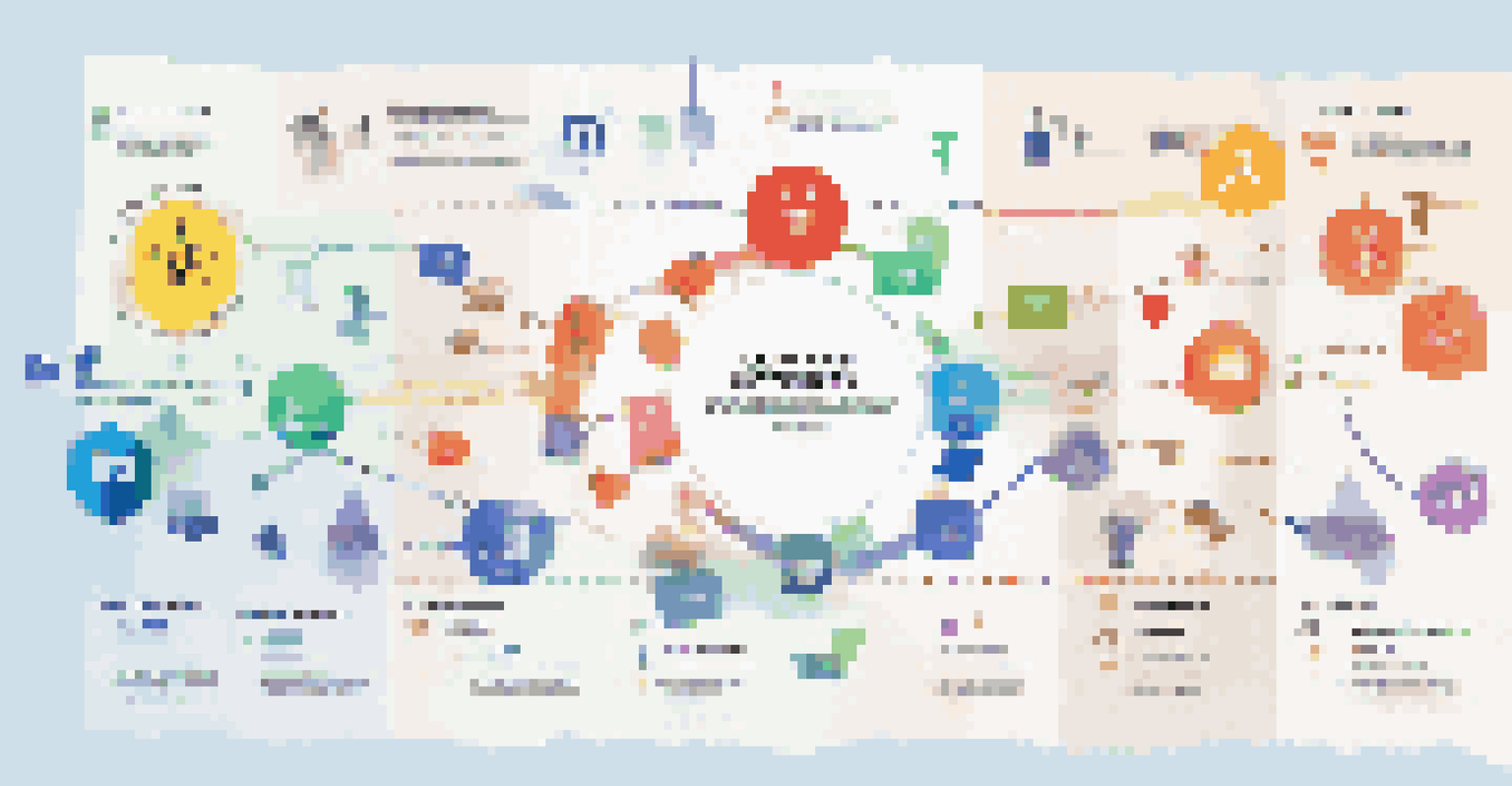Transforming Customer Experience Through Process Optimization

Understanding the Importance of Customer Experience
Customer experience (CX) is the sum of all interactions a customer has with a brand. It encompasses everything from the first touchpoint on the website to post-purchase support. A positive CX can lead to increased customer loyalty, repeat business, and even referrals.
Customer experience is the next competitive battleground.
On the other hand, a negative experience can drive customers away, often to competitors. In a world where options are abundant, companies can't afford to overlook the significance of how customers feel during their journey. This is where process optimization becomes crucial.
By refining and streamlining processes, businesses can enhance CX at every stage. This not only improves satisfaction but also boosts efficiency, which ultimately impacts the bottom line.
Identifying Bottlenecks in Customer Interactions
Bottlenecks are the slow points in a process that can frustrate customers. These might include long wait times, complex navigation on a website, or slow response rates from customer service. Identifying these pain points is the first step toward transformation.

To pinpoint bottlenecks, companies can analyze customer feedback, conduct usability tests, and monitor key performance indicators (KPIs). For example, if customers frequently complain about a lengthy checkout process, it's a clear signal that optimization is needed.
Enhancing Customer Experience (CX)
A positive customer experience can drive loyalty, repeat business, and referrals.
Once identified, businesses can prioritize which bottlenecks to address first. This targeted approach ensures that efforts yield the most significant improvements in customer satisfaction.
Leveraging Technology for Process Optimization
Technology plays a pivotal role in streamlining processes and enhancing CX. Tools like customer relationship management (CRM) systems, chatbots, and data analytics can automate mundane tasks and provide valuable insights. For instance, a chatbot can handle common inquiries, freeing up human agents for more complex issues.
Your most unhappy customers are your greatest source of learning.
Moreover, data analytics can unveil trends in customer behavior, allowing businesses to tailor their processes accordingly. Suppose analytics reveal that customers prefer quick responses during weekends. In that case, businesses can adjust staffing or automate responses during those peak times.
Implementing the right technology not only optimizes processes but also personalizes the customer experience. This fusion of efficiency and personalization creates a winning formula for businesses.
Training Employees for Enhanced Customer Interactions
Employees are the face of a company, and their interactions with customers significantly affect CX. Investing in training equips them with the skills and knowledge to handle various customer scenarios effectively. This includes understanding the products, empathy in communication, and problem-solving abilities.
Regular training sessions also keep employees updated on new technologies and processes. For instance, if a new CRM system is implemented, staff should receive thorough training to maximize its potential. A well-informed employee can turn a potentially negative interaction into a positive experience.
Identifying and Addressing Bottlenecks
Pinpointing slow points in customer interactions allows businesses to prioritize improvements for better satisfaction.
Ultimately, empowered employees are more engaged and motivated to provide excellent service. Their enthusiasm can resonate with customers, creating lasting impressions.
Gathering Customer Feedback for Continuous Improvement
Customer feedback is invaluable for understanding the effectiveness of processes. Surveys, reviews, and direct feedback can provide insights into what customers appreciate and what needs improvement. This ongoing dialogue helps businesses stay attuned to their customers' needs.
For example, after implementing changes based on feedback, companies can follow up with customers to measure satisfaction. This not only shows customers that their opinions matter but also builds trust and loyalty.
Continuous improvement should be a mindset ingrained in the company culture. By consistently seeking feedback and making adjustments, businesses can foster a cycle of innovation and enhancement in customer experience.
Creating a Seamless Omnichannel Experience
In today's digital age, customers interact with brands across various channels—be it social media, websites, or in-store. A seamless omnichannel experience ensures that customers receive consistent service, regardless of the platform. This is essential for maintaining a positive CX.
For instance, if a customer starts a purchase on a mobile app but has questions, they should be able to switch to a customer service chat without repeating themselves. This fluidity not only saves time but also demonstrates a brand's commitment to customer convenience.
Leveraging Technology for Optimization
Utilizing tools like CRM systems and data analytics can streamline processes and personalize the customer experience.
To achieve this, businesses need to integrate their systems and ensure all teams are aligned. By doing so, they create a cohesive experience that resonates with customers.
Measuring Success: KPIs and Metrics for CX
Measuring the success of process optimization efforts is crucial for understanding their impact on customer experience. Key performance indicators (KPIs) such as Net Promoter Score (NPS), Customer Satisfaction Score (CSAT), and Customer Effort Score (CES) can provide valuable insights into customer sentiment.
For example, a high NPS indicates that customers are likely to recommend a brand, while a low CES suggests that customers find processes cumbersome. By regularly tracking these metrics, businesses can gauge the effectiveness of their strategies and identify areas for improvement.

Ultimately, data-driven decision-making allows companies to refine their processes continuously, ensuring that they are always aligned with customer expectations.